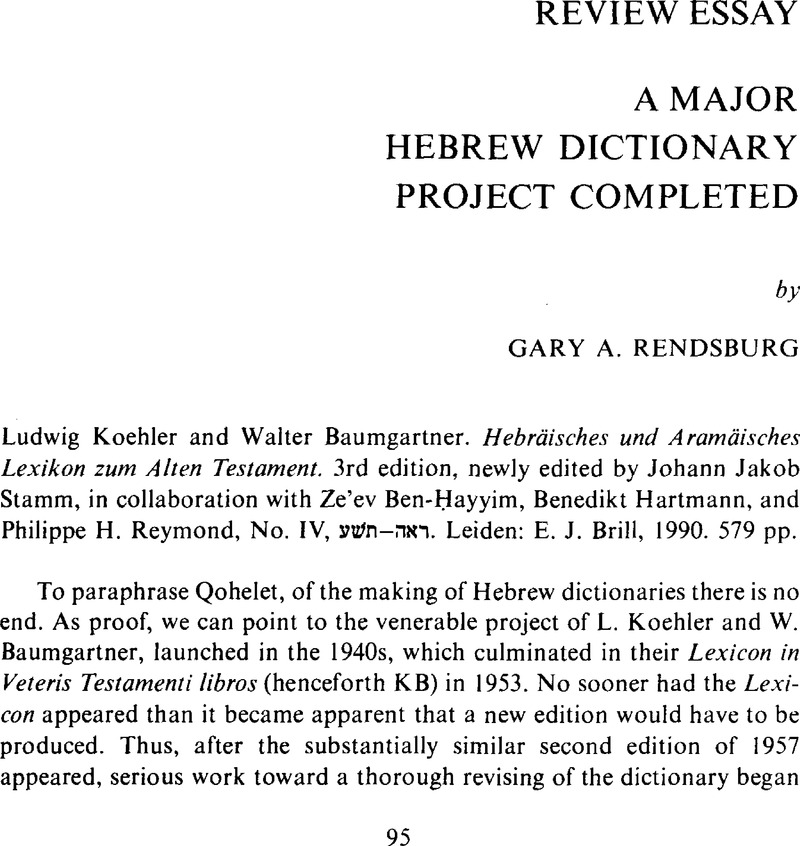Article contents
A Major Hebrew Dictionary Project Completed
Review products
Published online by Cambridge University Press: 15 October 2009
Abstract

Information
- Type
- Review Essay
- Information
- Copyright
- Copyright © Association for Jewish Studies 1993
References
1. For an inside view of the history of the project, see Stamm, J. J., “Bericht über den Stand der Arbeit an der 3. Auflage des hebräischen und aramäischen Wörterbuches von Ludwig Koehler und Walter Baumgartner,” Theologische Zeitschrift 45 (1989): 277–289.Google Scholar
2. Probably, the lexeme ![]() was archaic and had to be updated by the gloss
was archaic and had to be updated by the gloss ![]() . Similarly, the syntax was updated: the expression
. Similarly, the syntax was updated: the expression ![]() has no definite article; the newer term
has no definite article; the newer term ![]() occurs with the definite article. The former usage is typical of the Late Bronze Age (compare Ugaritic, where the definite article is unattested); the latter is typical of the Iron Age, when the innovative definite article was introduced. The lack of a definite article also can be witnessed in Gen. 14:10, where the form
occurs with the definite article. The former usage is typical of the Late Bronze Age (compare Ugaritic, where the definite article is unattested); the latter is typical of the Iron Age, when the innovative definite article was introduced. The lack of a definite article also can be witnessed in Gen. 14:10, where the form ![]() means ‘to the mountain’ (the Masoretic pointing creates a compromise form in attempting to introduce a definite article; the Samaritan Pentateuch simply presents the newer usage
means ‘to the mountain’ (the Masoretic pointing creates a compromise form in attempting to introduce a definite article; the Samaritan Pentateuch simply presents the newer usage ![]() ). These facts and others point to the relatWe antiquity of Genesis 14; in the widespread debate over the date of this crucial chapter, the linguistic evidence has not been brought to bear.
). These facts and others point to the relatWe antiquity of Genesis 14; in the widespread debate over the date of this crucial chapter, the linguistic evidence has not been brought to bear.
- 1
- Cited by

